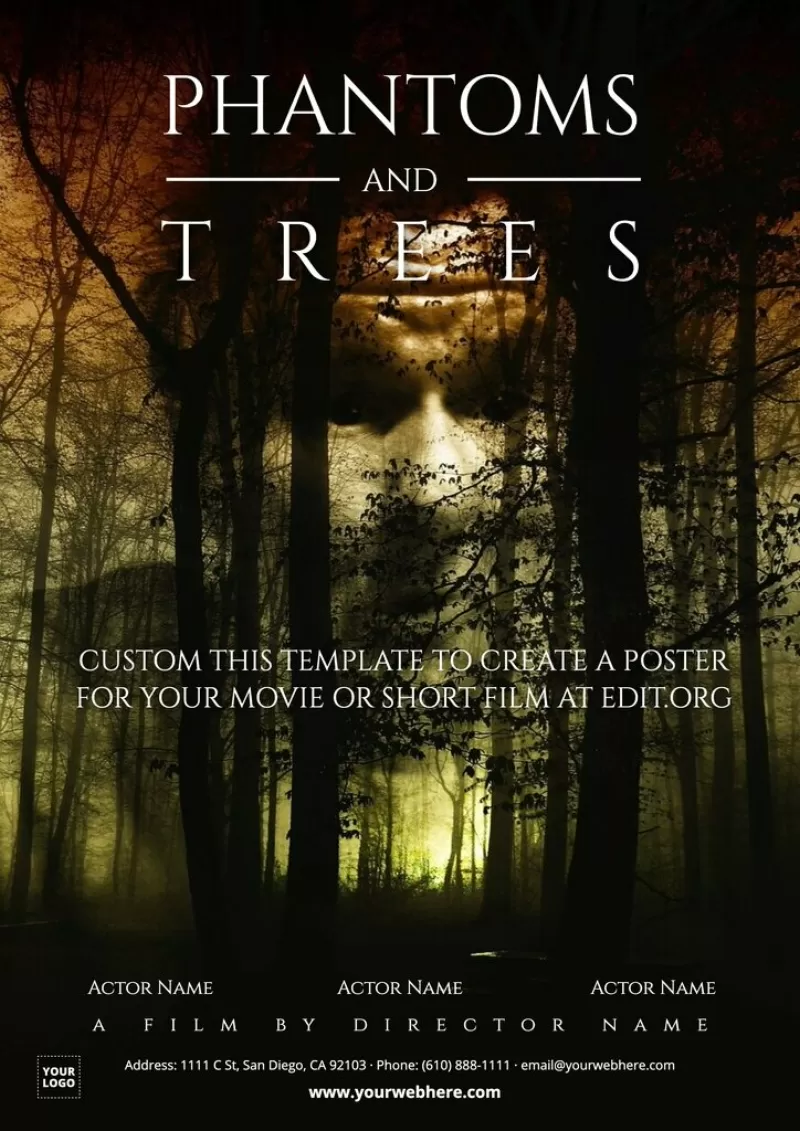Reimagining Cinema: The Future of Film with AI Movie Poster Generators
Reimagining Cinema: The Future of Film with AI Movie Poster Generators
Blog Article

The world of cinema has always been at the forefront of innovation, constantly evolving with technology. Today, as artificial intelligence gains ground in various creative fields, it is reshaping how we approach film promotion, particularly through the use of AI movie poster generators. These sophisticated tools are revolutionizing the art of poster design, offering filmmakers and marketers a new way to capture the essence of their stories visually.
Imagine a scenario where a small indie film can compete with major studio releases, not by budget alone but by the power of captivating imagery. AI movie poster generators leverage advanced algorithms to produce stunning visuals that can encapsulate the mood, genre, and theme of any film. As these tools become more accessible, they open up pathways for creativity and new expressions, encouraging a future where the artistry of cinema is enhanced, not replaced, by technology.
The Technology Behind AI Movie Poster Generators
AI movie poster generators leverage advanced machine learning algorithms and neural networks to create visually appealing promotional materials for films. At the core of this technology is a deep learning model that has been trained on a diverse dataset of existing movie posters, learning various styles, colors, and compositions that resonate with audiences. This training enables the AI to understand and replicate the key elements that make a poster successful, ensuring that the generated images capture the essence of a film's theme and genre.
The process begins with inputting relevant details about the movie, such as its title, genre, and key visual elements. These inputs are processed by the AI to generate a unique design that aligns with the film's narrative. By employing techniques like natural language processing, the generator can also consider the emotional tone of the movie, allowing it to select imagery and typography that evoke the desired feelings in potential viewers. This integration of text and visual elements plays a crucial role in crafting a compelling movie poster.
Film poster generator with no signup required
Furthermore, many AI movie poster generators utilize generative adversarial networks (GANs), which consist of two neural networks working in tandem. One network generates images while the other evaluates them, providing feedback that improves the quality of the output over time. This iterative process permits the AI to produce increasingly sophisticated and creative designs, ultimately leading to posters that not only meet industry standards but also push the boundaries of traditional graphic design. As technology continues to evolve, the capabilities of these generators are set to expand, offering filmmakers new ways to visualize their projects.
Creative Potential and Artistic Impact
The introduction of AI movie poster generators opens up new avenues for creativity in the film industry. These tools allow filmmakers and artists to experiment with unique visual styles and concepts that may not have been feasible through traditional means. By leveraging machine learning algorithms, creators can explore a vast array of design possibilities, integrating elements from various genres, cultures, and artistic movements. The ability to generate multiple iterations quickly encourages risk-taking and innovation, pushing the boundaries of how film is marketed and perceived.
Moreover, AI movie poster generators democratize the artistic process, enabling aspiring artists and independent filmmakers to create professional-quality visuals without the need for extensive design training. This accessibility fosters a more inclusive creative landscape where diverse voices and ideas can thrive. As creators collaborate with AI, they can blend human intuition with advanced algorithms, resulting in artwork that reflects a richer tapestry of experiences and narratives. This synergistic approach invites a broader audience to engage with film content.
However, the impact of AI on artistic expression raises important questions about originality and authorship. While these tools can enhance creativity, there is a risk of homogenization if over-reliance on AI leads to similar stylistic choices across film marketing. To maintain artistic integrity, it is crucial for creators to balance the advantages of AI technology with their own unique vision. Embracing AI as a collaborative partner rather than a replacement can ensure that the future of film remains vibrant and diverse, celebrating the full spectrum of human creativity.
Challenges and Ethical Considerations
The rise of AI movie poster generators introduces several challenges that the film industry must confront. One significant issue is the potential for copyright infringement. As these AI tools often rely on vast datasets that include existing artwork, there is a risk of generating posters that either directly mimic or are heavily inspired by copyrighted materials. Studios and creators must navigate the delicate balance between leveraging AI for creativity and ensuring that they do not infringe on the intellectual property of others.
Another concern relates to the authenticity of creative expression. While AI can produce visually stunning results, the question arises about the artistic value of AI-generated content. Critics argue that relying on AI may dilute the human element in art, as these tools lack personal experience and emotional depth. The film industry values storytelling and individuality, and there is a fear that AI-driven design might lead to homogenized visuals rather than unique artistic expressions that reflect diverse perspectives.
Finally, the ethical implications of job displacement cannot be overlooked. As AI movie poster generators become more sophisticated, there is a possibility that graphic designers and artists may find themselves competing against machines that can produce similar or superior results faster and at a lower cost. This raises questions about the future of creative professions and the need for new frameworks that recognize the contributions of human artists while integrating AI as a tool rather than a replacement. The industry must consider how to adapt to these changes while fostering an environment where human creativity continues to thrive alongside technological advancements.
Report this page